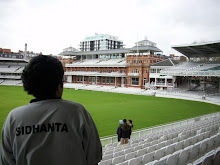
Representing one’s country is something everyone dreams of but a very few go on to achieve and that is why those who attain it are seen as special. They not only carry the pride of the nation on their sleeves but also act as an inspiration to their generation and propel youngsters to strive towards bigger goals. Especially in the Asian subcontinent where the sociological conditions are not always great and every day is a challenge in its own way these stars are hailed and revered as their escapades are an avenue to detach oneself from the grinds of the daily mundane life and that is one of the primary reason for cricket’s meteoric rise in Pakistan and India. The personal milestones of players are considered to be achievements of the citizens who could not break their shackles and it offers content for casual conversations in public joints and dinner tables across the geographical stretch. It is not a secret why Asian cricketers are the fulcrum to any ICC competition’s market profitability.
The players thrive on their popularity and the stardom status as they are aware of the roots, having travelled the same lanes and gone through the identical routine for years before wearing the country cap. While in their moulding stage many sleepless nights are spent dreaming and visualising the role of being a match winner in a world cup final or having the name enrolled on the honours board at the home of cricket. They rehearsal the victory laps, the celebratory antics and the stares at the opponent in front of their mirror at the expense of their social life and promise to themselves of remaining firmly intact with their background when the reality takes centre stage.
The selector’s phone call opens the door to international prominence and with it comes the biggest challenge of protecting one’s sanity of living up to the promises made in front of the mirror. The past has witnessed an enriching number of excellent craftsmen coming through the pipeline but the ‘legends’ differentiated themselves from the rest through their moral values and simplistic lifestyle which earned them respect in every country they played in whereas the stars have always been susceptible to the clutches of glamour that looks for opportunities to strengthen its claws on these ‘innocent’ minds. The same continues to be the scenario today as the lure of commercial riches have raised key questions on the mental toughness yet again and has resulted in the nation’s pride being tainted.
It is easy to point fingers at the parent body but no coaching and no education can teach a person the virtues of having the right intent and strong character. Citizens of a geographical zone where instability is the order of the day have every right to be disappointed but what about the individual’s promise much before he earned his cap. Did all those promises made in front of the mirror not haunt him before he overstepped the line or did he succumb to an uncontrollable environment which was set up by his fellow team mates? Can the youngster’s parents who were proudly boasting of their son’s heroic in a separate continent now visit their nearest grocery shop or resume their daily chores after this lustful act of their son. Did it all mean nothing when he used his bargaining power to tilt the equation in balance of ‘acts of shame’.
The beauty of sports lies in its ability to bring the best out of the performers without an assurance on the result in a fiercely competitive atmosphere but the noise in the media suggest that the line is slowly disappearing and if the allegations are true then sport might just have lost its unique advantage.
Sidhanta Patnaik
29th August 2010
18.38
Sheffield
(This piece was written after the completion of 4th test between England and Pakistan at Lord’s played from 26th – 29th August where Mohammed Asif and Mohammed Amir were alleged to have bowled no-balls which were pre planned for an exchanged amount of £150,000)
